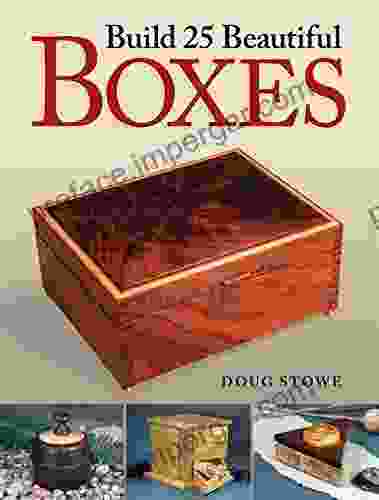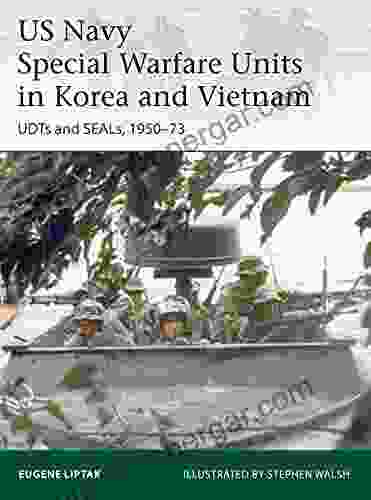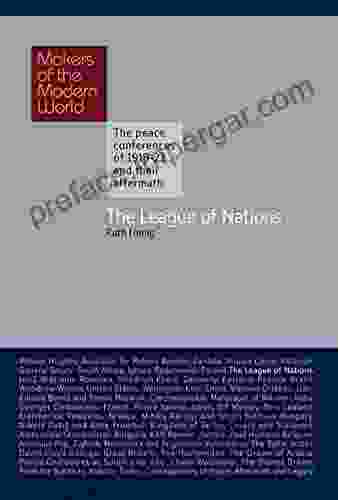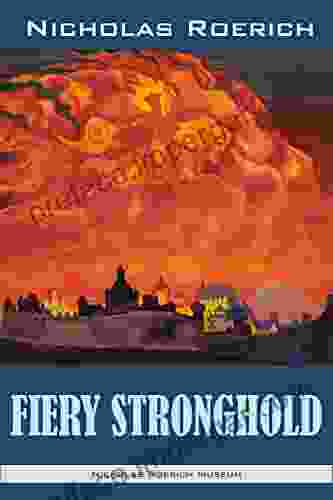The League of Nations: Makers of the Modern World

The League of Nations was the first international organization whose mission was to maintain world peace. It was founded on January 10, 1920, as a result of the Treaty of Versailles that ended World War I. The League's headquarters was in Geneva, Switzerland.
4.1 out of 5
| Language | : | English |
| File size | : | 3240 KB |
| Text-to-Speech | : | Enabled |
| Screen Reader | : | Supported |
| Enhanced typesetting | : | Enabled |
| Word Wise | : | Enabled |
| Print length | : | 224 pages |
The League of Nations was a major player in the interwar period. It played a role in resolving international disputes, such as the Åland Islands dispute between Finland and Sweden and the Mosul dispute between Turkey and Iraq. The League also established a number of international organizations, such as the International Labour Organization and the Permanent Court of International Justice.
However, the League of Nations was unable to prevent the outbreak of World War II. The League was weakened by the withdrawal of the United States in 1920 and the Soviet Union in 1933. The League was also unable to resolve the Manchurian crisis of 1931-1932, which led to the Japanese invasion of Manchuria. The League's failure to prevent World War II led to its dissolution in 1946.
Despite its failures, the League of Nations made a number of important contributions to the development of international law and diplomacy. The League also helped to establish a number of international organizations that still exist today.
The Origins of the League of Nations
The idea of an international organization to maintain world peace was first proposed in the 18th century by Immanuel Kant. Kant's idea was taken up by a number of peace activists in the 19th century, such as William Ladd and Elihu Burritt. In 1899, the First Hague Conference was held in the Netherlands to discuss the possibility of creating an international court of arbitration.
The First Hague Conference was followed by the Second Hague Conference in 1907. The Second Hague Conference established the Permanent Court of Arbitration, which was the first international court to be established on a permanent basis. The Second Hague Conference also adopted a number of conventions on the laws of war.
The outbreak of World War I in 1914 led to a renewed interest in the idea of an international organization to maintain world peace. In 1916, President Woodrow Wilson of the United States proposed the creation of a "League of Nations" in a speech to the United States Senate. Wilson's proposal was endorsed by the other Allied powers, and the League of Nations was established in the Treaty of Versailles.
The Structure of the League of Nations
The League of Nations was composed of three main bodies: the Assembly, the Council, and the Secretariat.
The Assembly was the plenary body of the League. It was composed of representatives from all member states. The Assembly met once a year to discuss and vote on resolutions.
The Council was the executive body of the League. It was composed of representatives from the major powers, as well as representatives from smaller states that were elected by the Assembly. The Council met more frequently than the Assembly to deal with urgent matters.
The Secretariat was the administrative body of the League. It was headed by a Secretary-General who was appointed by the Council. The Secretariat was responsible for carrying out the decisions of the Assembly and the Council.
The Achievements of the League of Nations
The League of Nations made a number of important achievements during its existence.
- The League played a role in resolving international disputes, such as the Åland Islands dispute between Finland and Sweden and the Mosul dispute between Turkey and Iraq.
- The League established a number of international organizations, such as the International Labour Organization and the Permanent Court of International Justice.
- The League helped to promote international cooperation on a wide range of issues, such as health, education, and refugee relief.
The Failures of the League of Nations
Despite its achievements, the League of Nations was unable to prevent the outbreak of World War II. The League was weakened by the withdrawal of the United States in 1920 and the Soviet Union in 1933. The League was also unable to resolve the Manchurian crisis of 1931-1932, which led to the Japanese invasion of Manchuria. The League's failure to prevent World War II led to its dissolution in 1946.
The Legacy of the League of Nations
The League of Nations was a major player in the interwar period. It made a number of important contributions to the development of international law and diplomacy. The League also helped to establish a number of international organizations that still exist today.
The League of Nations' failure to prevent World War II is a reminder of the challenges of maintaining world peace. However, the League's legacy is a reminder of the importance of international cooperation and the need for a strong international organization to maintain world peace.
4.1 out of 5
| Language | : | English |
| File size | : | 3240 KB |
| Text-to-Speech | : | Enabled |
| Screen Reader | : | Supported |
| Enhanced typesetting | : | Enabled |
| Word Wise | : | Enabled |
| Print length | : | 224 pages |
Do you want to contribute by writing guest posts on this blog?
Please contact us and send us a resume of previous articles that you have written.
 Book
Book Novel
Novel Page
Page Chapter
Chapter Text
Text Story
Story Genre
Genre Reader
Reader Library
Library Paperback
Paperback E-book
E-book Magazine
Magazine Newspaper
Newspaper Paragraph
Paragraph Sentence
Sentence Bookmark
Bookmark Shelf
Shelf Glossary
Glossary Bibliography
Bibliography Foreword
Foreword Preface
Preface Synopsis
Synopsis Annotation
Annotation Footnote
Footnote Manuscript
Manuscript Scroll
Scroll Codex
Codex Tome
Tome Bestseller
Bestseller Classics
Classics Library card
Library card Narrative
Narrative Biography
Biography Autobiography
Autobiography Memoir
Memoir Reference
Reference Encyclopedia
Encyclopedia Dr Nicole Apelian
Dr Nicole Apelian Drew A Swanson
Drew A Swanson Mark Littmann
Mark Littmann Don Dennis
Don Dennis Jack Hoban
Jack Hoban Rupert Matthews
Rupert Matthews Don Pease
Don Pease Dwayne Haskell
Dwayne Haskell Ernle Bradford
Ernle Bradford Douglas W Morrison
Douglas W Morrison Don Roley
Don Roley Edgar C Clausen
Edgar C Clausen Dr Harry Barry
Dr Harry Barry Petra Durst Benning
Petra Durst Benning Dorothy Littell Greco
Dorothy Littell Greco Doug Mcgill
Doug Mcgill Klaus J Puettmann
Klaus J Puettmann Sean Matula
Sean Matula Kathryn Schulz
Kathryn Schulz That Patchwork Place
That Patchwork Place
Light bulbAdvertise smarter! Our strategic ad space ensures maximum exposure. Reserve your spot today!

 Aldous HuxleyHow To Get The Most Out Of Your Life: The Ultimate Guide to Unlocking Your...
Aldous HuxleyHow To Get The Most Out Of Your Life: The Ultimate Guide to Unlocking Your...
 George R.R. MartinBuild 25 Beautiful Boxes: A Step-by-Step Guide to Creating Stunning Boxes for...
George R.R. MartinBuild 25 Beautiful Boxes: A Step-by-Step Guide to Creating Stunning Boxes for... Deion SimmonsFollow ·5.7k
Deion SimmonsFollow ·5.7k Joseph ConradFollow ·16k
Joseph ConradFollow ·16k Ezekiel CoxFollow ·17.2k
Ezekiel CoxFollow ·17.2k Gil TurnerFollow ·18.2k
Gil TurnerFollow ·18.2k Jeremy MitchellFollow ·19.1k
Jeremy MitchellFollow ·19.1k Edward ReedFollow ·12.8k
Edward ReedFollow ·12.8k Rodney ParkerFollow ·19.6k
Rodney ParkerFollow ·19.6k David BaldacciFollow ·11.6k
David BaldacciFollow ·11.6k

 Donovan Carter
Donovan CarterUnveiling the Tapestry of Western Civilization:...
: Step into the annals of Western...

 Pablo Neruda
Pablo NerudaUnveil the Secrets: The Welsh Murder Mysteries
Prepare to be captivated as...

 Benji Powell
Benji PowellNot Without Our Consent: Lakota Resistance to...
In the mid-20th...

 Ryan Foster
Ryan FosterUncover the Heroic Exploits of U.S. Navy Special Warfare...
The annals of modern warfare are replete...

 Gage Hayes
Gage HayesPlan to Provide Quality Care for All While Saving...
The healthcare...

 Felix Carter
Felix CarterUnveiling the Timeless Wisdom of Machiavelli: The...
Niccolò...
4.1 out of 5
| Language | : | English |
| File size | : | 3240 KB |
| Text-to-Speech | : | Enabled |
| Screen Reader | : | Supported |
| Enhanced typesetting | : | Enabled |
| Word Wise | : | Enabled |
| Print length | : | 224 pages |







